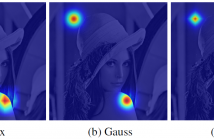
- Read more about IMAGE ALIGNMENT VIA MULTI-MODEL GEOMETRIC FIFTING AND HIERARCHICAL HOMOGRAPHY ESTIMATION
- Log in to post comments
- Categories:
 16 Views
16 Views
- Categories:
 5 Views
5 Views
- Read more about Saliency-based Feature Selection Strategy in Stereoscopic Panoramic Video Generation
- Log in to post comments
In this paper, we present one saliency-based feature selection and tracking strategy in the feature-based stereoscopic panoramic video generation system. Many existing stereoscopic video composition approaches aims at producing high-quality panoramas from multiple input cameras; however, most of them directly operate image alignment on those originally detected features without any refinement or optimization. The standard global feature extraction threshold always fails to guarantee stitching correctness of all human interested regions.
- Categories:
 7 Views
7 Views
Multi-image alignment, bringing a group of images into common register, is an ubiquitous problem and the first step of many applications in a wide variety of domains. As a result, a great amount of effort is being invested in developing efficient multi-image alignment algorithms. Little has been done, however, to answer fundamental practical questions such as: what is the comparative performance of existing methods? is there still room for improvement? under which conditions should one technique be preferred over another?
- Categories:
 10 Views
10 Views
- Read more about MANIFOLD-BASED ANALYSIS OF NATURAL STOCHASTIC TEXTURES WITH APPLICATION IN TEXTURE SYNTHESIS
- Log in to post comments
Embedding textured images in manifolds reveals latent information regarding texture structure and allows useful analysis of these high dimensional images in a low dimensional space. We present a framework for analysis and synthesis of natural stochastic textures (NST) which constitute an important subset of textures that are modelled as realizations of random processes. The randomness of NST differentiates them from other types of images and requires a dedicated method for analysis and synthesis. We demonstrate several applications of this framework.
- Categories:
 10 Views
10 Views
- Read more about A sparse coding framework for gaze prediction in egocentric video
- Log in to post comments
- Categories:
 12 Views
12 Views
- Read more about A MULTI-PERSPECTIVE APPROACH TO ANOMALY DETECTION FOR SELF-AWARE EMBODIED AGENTS
- Log in to post comments
This paper focuses on multi-sensor anomaly detection for moving cognitive agents using both external and private first-person visual observations. Both observation types are used to characterize agents’ motion in a given environment. The proposed method generates locally uniform motion models by dividing a Gaussian process that approximates agents’ displacements on the scene and provides a Shared Level (SL) self-awareness based on Environment Centered (EC) models.
- Categories:
 24 Views
24 Views
- Read more about A Low Power Hardware Implementation of Multi-Object DPM Detector for Autonomous Driving
- Log in to post comments
Object detection is a fundamental process in traffic management systems and self-driving cars. Deformable part model (DPM) is a popular and competitive detector for its high precision. This paper presents a programmable, low power hardware implementation of DPM based object detection for real-time applications.
- Categories:
 23 Views
23 Views
In this paper, we propose an extension of guided image filtering to support arbitrary window functions. The guided image filtering is a fast edge-preserving filter based on a local linearity assumption. The filter supports not only image smoothing but also edge enhancement and image interpolation. The guided image filter assumes that an input image is a local linear transformation of a guidance image, and the assumption is supported in a local finite region. For realizing the supposition, the guided image filtering consists of a stack of box filtering.
- Categories:
 21 Views
21 Views
- Read more about MODEL BASED DEEP LEARNING IN FREE BREATHING, UNGATED, CARDIAC MRI RECOVERY
- Log in to post comments
We introduce a model-based reconstruction
framework with deep learned (DL) and smoothness regularization
on manifolds (STORM) priors to recover free
breathing and ungated (FBU) cardiac MRI from highly undersampled
measurements. The DL priors enable us to exploit
the local correlations, while the STORM prior enables
us to make use of the extensive non-local similarities that are
subject dependent. We introduce a novel model-based formulation
that allows the seamless integration of deep learning
- Categories:
 5 Views
5 Views